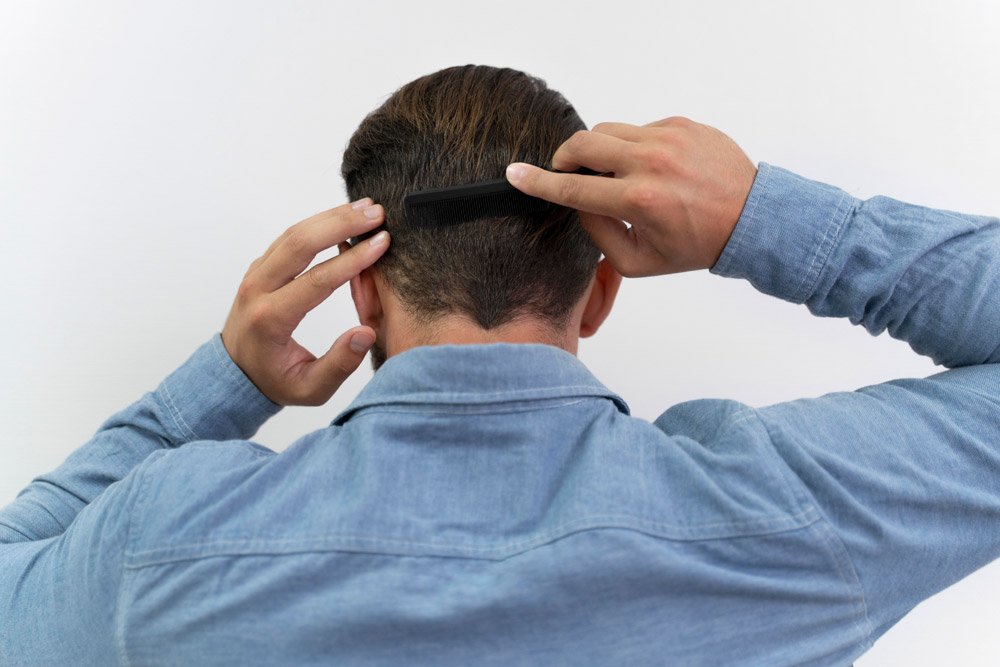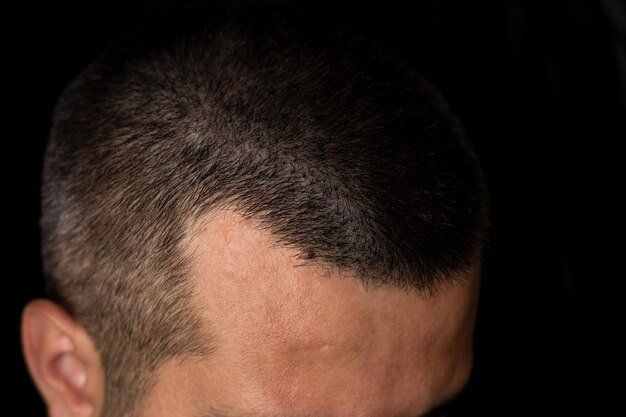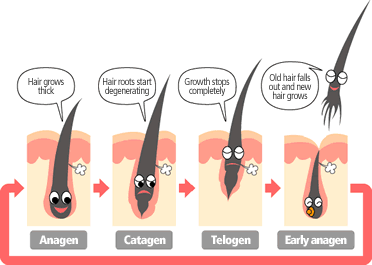THE HAIR GROWTH CYCLES
Hair may seem a simple part of our bodies. However, its formation and growth are actually quite complex. Understanding how it functions, and flourishes, is vital for effective hair restoration.
HOW HAIR GROWS?
Hair forms in a pouch-like structure below the skin that we call a hair follicle. What we see as hair is actually the hair shaft -a keratinized, hardened protein made up of three layers that grow from this follicle. Keratin is not a living structure -our visible hair is actually dead. Each of the shaft’s three layers plays a role in the hair’s health, however. These three layers are the medulla, cortex, and cuticle. The cortex makes up the majority of the hair shaft and together with the medulla is responsible for hair’s pigmentation.
Specifics Of Human Hair And Its Types
Unlike other mammals, human hair growth and hair shedding happen randomly instead of through seasonal or cyclical phases. For instance, we do not produce a thicker coat of hair for warmth in wintertime and shed it in summer.
Instead, 80-90% of regular scalp hair is in its active growth cycle at any time. Most of our hair follicles, however, are actually unnoticeable and cover most of the body. In fact, we have more hair follicles per square inch of skin than other higher primates like chimpanzees and gorillas. Vellus hair is most abundant. Fine, pale, and short, such hair is invisible to the naked eye. The forehead, for example, exclusively has vellus hair but has more hair follicles than anywhere else on our bodies.

The thicker, fully pigmented hair most people consider “real hair” we call terminal hair. It is on the scalp, eyebrows, legs, backs, underarms, and genital areas. This is the hair the Light Sheer diode laser treats, as do other hair restoration treatments.
SCALP HAIR GROWTH
Scalp hair grows approximately six inches per year. Everyone’s hair grows differently, depending on age, weight, metabolism, hormones, ethnicity, medications, and other factors. All hair, though, goes through three distinct growth phases. These phases are the anagen, catagen, and telogen phases. Each is possible throughout the year and depends on personal factors such as age and nutrition
ANEGAN PHASE
The anagen phase is the active phase of hair growth. During it, cells in the hair root rapidly divide. New hairs form, pushing those that have stopped growing up and out of the follicle. Hair grows around one centimeter per twenty-eight days during the anagen phase. Scalp hair can spend anywhere, on average, from two to six years in this phase.
That duration also affects possible length. Those facing difficulty growing their hair very long typically have a shorter anagen phase. Hair on other parts of the body, such as the arms, legs, eyebrows, and eyelashes, have a short anagen phase lasting only about thirty to forty-five days.

The anagen phase shortens as we age. This is actually one major cause for hair thinning. Over time, hair in the anagen phase loses its thickness and pigmentation. Not only does hair become thinner and lighter, its time in the anagen phase shortens.
People can prematurely lose hair in the anagen growth cycle too. Emotional or physical stress, nutrition, and bodily trauma can all be root causes. Anagen effluvium, meanwhile, is when hair leaves its anagen phase due to chemotherapy or other toxic exposure.

CATAGEN PHASE
Approximately 3% of all hair is in the catagen phase at a given time. It lasts around two to three weeks as hair ceases the anagen phase but has not yet begun the telogen phase. The catagen phase specifically refers to the hair shaft attaching to the lower part of hair responsible for growth, cutting off blood supply.
The strand’s growth resultantly stops and the hair strand becomes a “club” hair.
HAIR GROWTH CYCLES AND HAIR RESTORATION TREATMENTS
Many reasons exist for hair loss. Most often, though, hormonal changes cause scalp hair follicles to grow vellus hair after losing its club strand. A hair restoration procedure is often the only way to distribute scalp follicles that grow terminal hair in balding or thinning areas. New advancements, though, are encouraging hair density and growth without any procedure at all.
ACell, Cytokine Rich Plasma (CRP), and other treatments are proving themselves excellent for spurring growth and density. A mainstay for encouraging surgical recuperation, such treatments are rich with growth factors, cytokines, and other elements that spur stem cell activity. In turn, this fosters cellular repair -hastening recovery and lessening scarification. Scalp injections like CRP and ACell foster scalp health as well hair growth and diameter. These advancements are also ideal for Cole Isolation Technique (CIT®) post-op, as it is the only FUE type that leaves stem cell remnants in donor areas. Applying ACell + CRP encourages these remnants to regenerate follicles, dramatically increasing overall yield. Learn more by scheduling an online consultation today!

